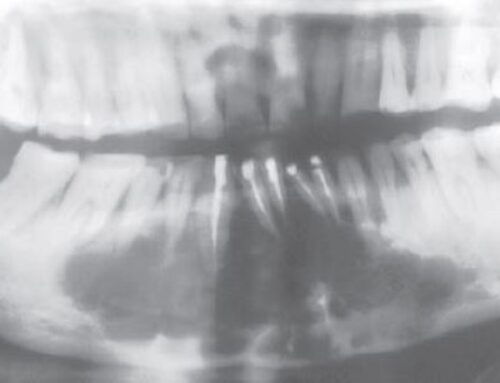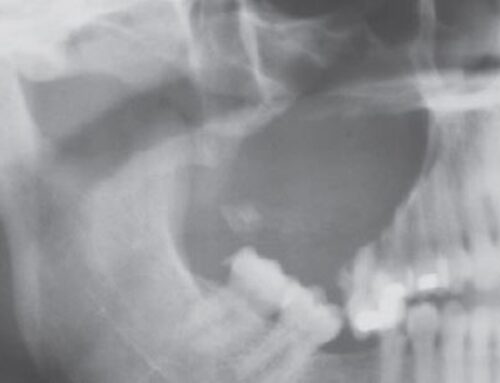AKA: Follicular Cyst
Incidence: age 10 to 30; male > female; whites > blacks; 20% of all epithelium lines cysts of jaw.
Cause: Develops by accumulation of fluid between reduced enamel epithelium and tooth crown. Continue to grow as a result of increased osmotic pressure within the lumen of the cyst
Clinical Presentation: painless expansion. Can become infected and cause pain.
Location: mandibular 3rd molars, maxillary canines, maxillary 3rd molars, and mandibular second premolars; sometimes associated with supernumerary teeth or odontomas
Radiographic Features: unilocular radiolucency associated with the crown of an unerupted tooth; larger lesion may appear multilocular due to persistence of bone trabeculae within the radiolucency; needs to be 3-4mm to be differentiated from enlarged follicle; can displace teeth and cause root resorption of adjacent teeth; often with sclerotic borders; infected cyst may show ill-defined borders
Compare to: odontogenic keratocysts, unilocular ameloblastomas, and many other odontogenic and nonodontogenic tumors
Histopathology: loosely arranged fibrous connective tssue wall containing considerable glycosaminoglycan ground substance.
Treatment: marsupialization and curettage w low recurrency rates
The dentigerous cyst is a cyst that originates by the separation of the follicle from around the crown of an unerupted tooth. It is the most common type of developmental cyst, making up 20% of all epithelium lined cysts of the jaw. The dentigerous cyst encloses the crown of an unerupted tooth and is attached to the tooth at the cementoenamel junction.
**Dentigerous cyst might undergo neoplastic transformation into ameloblastoma, squamous cell carcinoma, intraosseous mucoepidermoid carcinoma
Types of Dentigerous Cysts
| Central | Lateral | Circumferential |
| Most common; cyst surrounds crown of tooth and crown projects into cyst | Usually associated with mesioangular impacted mandibular third molar; cyst grows laterally along the root surface and partially surrounds crown | Cyst surrounds the crown and extends for some distance along the root so that a significant portion of the root appears to lie within the cyst |






